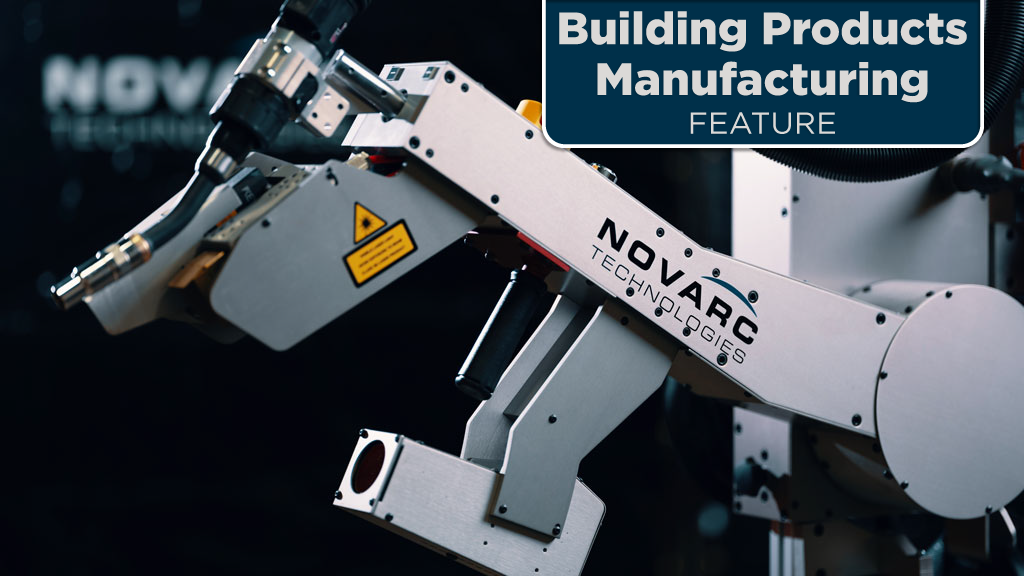North Vancouver’s Novarc Technologies ‘cobot’ is putting the torch to the welding skills gap.
“As the baby-boomers retire, there is going to be a shortage of 400,000 welders (in North America),” said Soroush Karimzadeh, Novarc’s CEO and co-founder.
“It is a huge problem,” he said as there is a growing demand for infrastructure, oil and gas, wastewater, shipbuilding and industrial projects, all needing welders for pipe fabrication leading to a breach between supply and demand.
Founded in 2013, Novarc is a Canadian robotics company that specializes in the design and commercialization of collaborative robots (cobots) for industrial applications.
That gap in skilled welders caused Karimzadeh, an electrical engineer who has long held an interested in robotics and artificial intelligence, to develop what he calls the world’s first collaborated spool welding robot (SWR) or cobot specifically designed to meet the needs of in shop fabricators and mechanical contractors needing welders.
The SWR automates the welding process but collaborates with an operator who positions the welding arm and inputs the welding instruction via computer terminal. The operator has a control panel that initiates the start and completion of the weld and has the ability to over ride any work the cobot is doing on the pipe.
Karimzadeh said the operator needs only basic welding skills as most information is pre-programmed, and, the cobot can perform high-quality and difficult pipe welds that would require a seasoned welder. Giving the cobot instruction is as simple as using a Smartphone, he said.
The SWR uses a floating long-reach manipulator with a three-axis robotic arm at the end that provides flexibility and manoeuvrability allowing it to works on a range of pipe diameters to perform roll welding. Installed positioners roll the pipe as the cobot welds it. The SWR is also capable of welding other items such as flanges, Ts and elbows.
Karimzadeh said the cobot brings health and safety gains to the shop floor as operators are distanced from the welding site and removed from metal dust and fumes that occur during welding. Also, the operator is away from heat generated by the welding, a factor that can improve the work environment during summer.
The cobot handles pipe in the range of two to 60 inches but the majority of installations have the cobot dealing with pipe that measures four and 36 inches, he said.
While the cobot, he said, reduces the need for highly skilled welders it also has a higher accuracy rate on perfecting joins resulting in less pipe deficiencies needing repair as human error is eliminated. “The average repair rate is between one and three percent,” said Karimzadeh as pipe is tested out by various means for the integrity of a join. By using the cobot, the repair rate is seen to drop to less than one percent.
As well, the productivity rate realized on a shift is seen to increase over manual welding by two to threefold on average based on production rates where carbon steel pipe is used. “It is even higher for stainless steel,” he said.
Installations have occurred in Canada and U.S. and the company has now sent out demo units to Saudi Arabia, Germany and China. A new feature is being added to the units this year, Karimzadeh said. The cobot will have optics that will allow it to see the work carried out and if that vision should match any of the deficiency images in its data bank that could lead to a improper joints, it can adjust and correct.
Karimzadeh hedges on disclosing the cost of a unit as it changes according to the company that is installing the unit and needed modifications made to the plant’s flow lines as positioners are installed to roll the pipe.
“Every shop is different,” he said. Rather, he stresses return on investment (ROI).
“We really care what the ROI is and what is the value it brings,” he said of installations. “What we have seen is an ROI in six to 18 months.”
That’s only on the production side, he said, as there are also long-term gains accrued such as augmenting the shortage of skilled welder which is a forceful driver.
“When there is a shortage, the cost of labour go up,” he said which can add to the future costs of production for a company.
The company has placed cobots in Canada and the U.S. with mechanical contractors and fabricators who want more production and efficiency in-plant to better meet contracts demands and bid on new contracts. “One of the benefits that customers consider is that it allows them to secure more projects,” he said.
Videos of the cobot are available on Novarc’s website: www.novarctech.com



Recent Comments
comments for this post are closed